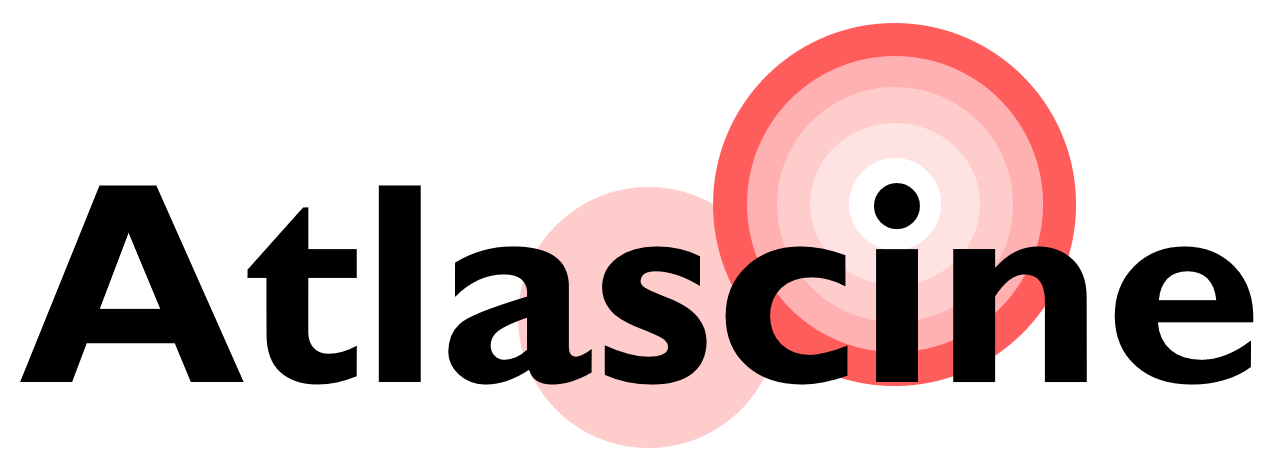The main aim of Atlascine is to streamline the process of transforming audiovisual material into a digital map and to enable a direct interface between audiovisual material, text and the map. With the latest version of the platform, researchers in many disciplines can use the map not only as a way to visually synthesize large volumes of annotated stories and to identify new patterns and structures in these stories, but also to navigate within the stories themselves and find specific events that link stories and places.
Atlascine’s development has been driven by three main principles: (1) the map should not replace the story but accompany it; (2) the mapping process should be as transparent as possible; and (3) the map and the story are to be made fully interconnected in order to expand our ability to navigate within and between stories, maps and places.
History
#Since its very first version in 2008, the development of Atlascine has been driven by a clear research goal: to translate emerging cartographic principles and concepts into tangible mapping tools and practices. While the original idea was to develop new forms of spatial expressions inspired by cinematographic techniques to address issues raised by critical cartographers (such as the constructed and subjective dimensions of maps), the latest version of this free and open source platform – known internally as Atlascine v4 – has been driven by the influence of contemporary cartographic theories, recent mapping technologies and ethics and practices from Oral history.
The following video tells the story of Atlascine. Documentation on previous versions of Atlascine can be found by visiting our old Wordpress page.
List of publications mentioning Atlascine:
#Alavez, José. 2022. “If I Die Far from You: Deep Mapping Grief and Loss in the Context of Migration.” PhD Thesis, Montreal, CA: Concordia University.
Alavez, José, Lilyane Rachédi, and Sébastien Caquard. 2021. “(Deep) Mapping Postmortem Geographies in the Context of Migration.” From the European South Journal 8: 29–46.
Boudreau Julie-Anne, Bensiali, Célia and Laura Ferro. Forthcoming 2023. "Quilting Comparison: Wonder, Translation and Theorization." In Routledge Handbook of Comparative Urban Studies. London: Jennifer Robinson and Patrick Le Galès.
Caquard, Sébastien, Emory Shaw, and José Alavez. 2021. “How Distant Is Close Enough? Exploring the Toponymic Distortions of Life Story Geographies.” GeoHumanities 8 (1): 102–21. https://doi.org/10.1080/2373566X.2021.1965898.
Caquard, Sébastien, Shaw, Emory, Alavez, José, and Dimitrovas, Stefanie. 2019. "Mapping Memories of Exiles: Combining Conventional and Alternative Cartographic Approaches", in Sarah De Nardi, Hilary Orange, Eerika Koskinen-Koivisto, Danielle Drozdzewski and Steven High (eds.), Memoryscape Handbook, Routledge: 52-66.
Caquard, Sébastien, and Stefanie Dimitrovas. 2017. “StoryMaps & Co. The State of the Art of Online Narrative Cartography.” M@ppemonde 121: 1–31.
Caquard, Sébastien, and Jean-Pierre Fiset. 2014. “How Can We Map Stories? A Cybercartographic Application for Narrative Cartography.” Journal of Maps 10 (1): 18–25. https://doi.org/10.1080/17445647.2013.847387.
Caquard, Sébastien, and Daniel Naud. 2014. “A Spatial Typology of Cinematographic Narratives.” In Modern Cartography Series, 5:161–74. Elsevier.
Caquard, Sébastien, Naud, Daniel, and Benjamin, Wright. 2013. “Mapping Film Audiences in Multicultural Canada”. In Hallam J. and Roberts L. (eds.), Locating the Moving Image: New Spatial Methodologies, Indiana Press University, 130-149.
Caquard S., Naud D., and Perichon V. 2009. “La répartition des salles obscures canadiennes: un éclairage géographique“, Cahiers de géographie du Québec 53 (149): 221-241.
Caquard S. and Wright B. 2009. “Challenging the Continuity System of the Technological Map: A Cinematographic Perspective”, In Cartwright W., Gardner G. and Lehn A. (Eds.), Art and Cartography, Springer: 193-206.
Olmedo, Élise, and Sébastien Caquard. 2022. “Mapping the Skin and the Guts of Stories – A Dialogue between Geolocated and Dislocated Cartographies.” Cartographica: The International Journal for Geographic Information and Geovisualization 57 (2): 127–46. https://doi.org/10.3138/cart-2021-0006.
Vergez-Couret, Marianne, Marie-Hélène Lay, and Eva Lescure. 2021. “Cartographie Thématique de Textes En Poitevin-Saintongeais.” In Printemps (virtuel) des SHS : Table ronde « La cartographie des récits », Université de Poitiers, 1er avril 2021.
Yang, Mengqian, and Sébastien Caquard. 2019. “Mapping The Shawshank Redemption: Film Tourism, Geography and Social Media.” In Media’s Mapping Impulse, Anton Escher, Chris Lukinbeal, Stefan Zimmermann, 281–300. Stuttgart: Verlag.
Aknowledgements
#The Atlascine project is led by Sébastien Caquard in close collaboration with Emory Shaw at the Geomedia Lab of Concordia University.
The software development for Atlascine was carried out at the Geomatics and Cartographic Research Center (GCRC) of Carleton University by Jean-Pierre-Fiset, Decheng Zheng, Robert Oikle, and especially Alex Gao, under the supervision of Amos Hayes, Peter Pulsifer, and D.R. Fraser Taylor, using the open-source Nunaliit software. Thanks also to Tanvir Islam, Jazmin Romero, Ryan Taylor, and Andrew Schoenrock from Research Computing Services (Carleton University). This project also benefited from the research work conducted by Sabine Bergler, Nadia Bilal, Nadia Sheikh, Catherine Dominguès, and Rodolphe Gonzalès.
Thanks to all those who shared their stories and agreed to make them public, not only providing content but also giving meaning to the Atlascine project.
Thanks to all those who contributed to developing atlases with Atlascine and advancing the project: Daniel Naud, Stefanie Dimitrovas, Emory Shaw, José Alavez, Sepideh Shahamati, Léa Denieul, Jessica Babikian, Marianne Vergez Couret, Cynthia Hammond, Vanessa Sicotte, Lea Kabiljo, Tom McGurk, Élise Olmedo, Mengqian Yang, Paul Moore, Piyusha Chatterjee, Marie Lavorel, Sarah Bengle...
Thanks to the Social Sciences and Humanities Research Council of Canada (SSHRC) and CANARIE for their financial support. Atlascine is graciously hosted on the servers of Concordia University - Instructional and Information Technology Services (IITS).
Contact
#For more information about Atlascine or to inquire about collaborations, please contact Sébastien Caquard at sebastien.caquard@concordia.ca.
For technical inquiries, please contact Emory Shaw at emory.shaw@concordia.ca.
To propose an enhancement or to report a bug, please open an issue on our GitHub repository.
